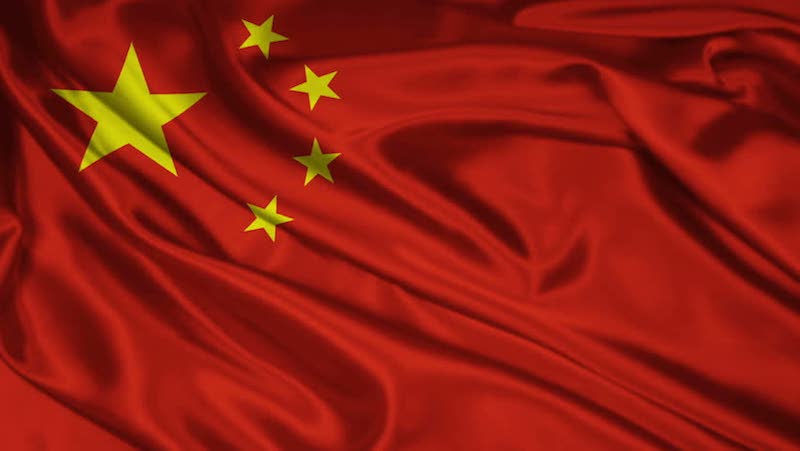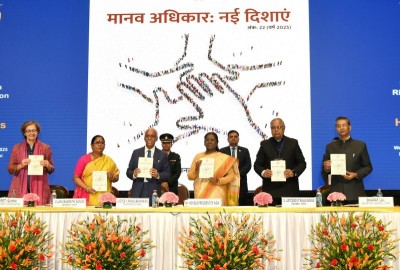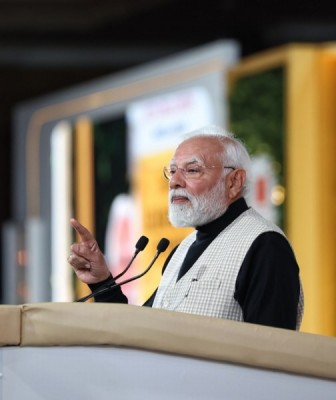 South China Sea
South China Sea
On the fifth anniversary of PCA Ruling, South China Sea remains a dangerous flashpoint
July 2021 coincidentally happens to be landmark developments in relation to Communist China under the leadership of Xi Jinping, who has moulded himself in the frame of past Chinese Emperors by declaring himself President of the country for life and seeking regional, if not global, domination.
The first is the celebration of 100 years of the birth of the Chinese Communist Party, which is done with great pomp and splendour injecting the population of the country with ultra-nationalism and the Chinese dream of its destiny of emerging as the Middle Kingdom.
The other is the fifth anniversary of the PCA Ruling, a verdict claiming that China has no legal basis for historic claims on the Nine-dash line, a symbol of Chinese expansionism.
For the latter, China showed utter contempt for it by rejecting the ruling and engaging in further creeping occupation of islands and features, artificial building of new islands and militarizing them, not only to scare away the other claimants to South China Sea, but also throwing challenge at other stakeholders whose trade and economic life depends on freedom of navigation over waters and overflights over airspaces and threatening them with dire consequences, evident from Xi’s speech at the CCP’s centenary celebrations that foreign forces would “crack their heads and spill blood,” if they tried to prevent China to rise.
Growing distrust of China in Southeast Asia
This concern and fear is also reflected in the State of Southeast Asia 2021 survey, undertaken by the ISEAS of Singapore, tracking the trust and distrust ratings of major powers in the region that asserts “two juxtaposing trend lines with regard to Southeast Asian perceptions towards China, as simultaneously the most influential and most distrusted power in the region”.

In contrast to China’s trust quotient going downward, the US image in the eyes of Southeast Asians improved, even in countries apparently leaning heavily towards Beijing.
More revealing is the confirmation that Beijing’s charm offensive towards Southeast Asia through its cloud and ground diplomacy, together with its apparent success in containing the pandemic domestically, its “mask and vaccine diplomacy” couldn’t change that trust deficit arising essentially from the former’s bellicosity and expansionism.
The Chinese Haiyang Dizhi 8 geological survey ship spent much of 2019 harassing a Vietnamese joint venture with a Russian firm that was exploring for energy in Vietnam’s exclusive economic zone (EEZ) in the South China Sea.
That intimidation has continued in 2020, in spite of the coronavirus crisis. On April 3, a Vietnamese fishing vessel was sunk by a Chinese coast guard ship in disputed waters near the sea’s Paracel Islands.
China’s Coast Guard Law heightens possibility of conflict
Southeast Asian countries are not only concerned about the loss of sovereignty and their foreign policy choices, but also rightfully worried about China’s recently enacted coastguard law given that the law heightens the possibility that Beijing’s maritime patrols will use force when they encounter regional counterparts in disputed waters.
In other words, Beijing will “take all necessary measures”, including the use of weapons, against foreign ships it deems as intruders.
Vietnam believes that China’s new law in effect expands its grip over the South China Sea and increases the possibility of “dangerous encounters” between its coastguard and the maritime patrol forces of Vietnam, Malaysia, Indonesia and even the US.
The chief of Indonesia’s Maritime Security Agency has warned that China’s new coastguard law has heightened the risk of a “spill over conflict” into Indonesia’s territorial waters around the Natuna Islands.
Views of China being a threat to Indonesia’s sovereignty are also present within the Indonesian military. Likewise, defence secretary Delfin Lorenzana of the Philippines is worried that China’s new law may cause an open conflict in the South China Sea.
Beijing is totally indifferent to their concerns regarding the new Coastguard Law, like it is to the PCA ruling of illegality of Chinese claims on South China as per the rules and norms of international law enshrined in the UNCLOS (The United Nations Convention on the Law of Sea).
.jpg)
China expanding its horizon of poaching on others EEZ
Until recently, Vietnam and the Philippines had been the major targets of China’s creeping occupation in South China Sea, but now over the last two years Malaysia has also emerged as another front where Beijing has now expanded its focus, even though disputes existed also between it and Kuala Lumpur.
Last month China sent more than a dozen military transport aircraft to the vicinity of disputed shoals in the South China Sea administered by Malaysia, prompting the latter to scramble a fighter jet to investigate. This is not the first time PLAAF jets have approached Malaysia, although it appears to be the first time such a large force has been observed.
The PLAAF transports involved in last month’s incident originated from bases in China and not the air bases the country built on reclaimed islands in the South China Sea.
Response to China’s bellicosity in South China Sea
China’s bellicosity and militarization of the South China Sea has brought counter-response from the United States and others in the Indo-Pacific region. U.S. Secretary of State Antony Blinken under the Biden administration wasted no time in reaching out American allies in Southeast Asia, holding calls with his Philippine and Thai counterparts the day after his confirmation by the U.S. Senate.
U.S. “rejects China’s maritime claims in the South China Sea to the extent they exceed the maritime zones that China is permitted to claim under international law as reflected in the 1982 Law of the Sea Convention.”
Of more direct importance to the Philippines, he also “stressed the importance of the Mutual Defense Treaty for the security of both nations, and it's clear application to armed attacks against the Philippine armed forces, public vessels, or aircraft in the Pacific, which includes the South China Sea.”
Besides the United States, others like Australia, Japan and more recently the UK have issued statements opposing maritime claims of China as illegal on the basis of PCA ruling.
So is India, which has emphasised maintaining peace and stability, freedom of navigation and overflight in the South China Sea in keeping with international law and that the Code of Conduct, being negotiated, should not prejudice the legitimate interests of third parties and should be fully consistent with the United Nations Convention on the Law of the Sea (UNCLOS).
This statement by India assumes significance amid the growing assertiveness of China in the South China Sea. On the fifth anniversary of the PCA ruling then, South China Sea remains a major flashpoint that has potentials for a major war between the United States and China.
Region’s preferred choice of resolution of South China Sea Disputes: PCA Ruling
As the regional countries facing pressure from China find themselves militarily weak, they want to compensate for their military weaknesses by asserting their legal rights in the South China Sea. This was evident from Malaysia’s move at the end of 2019 to make a formal submission to the United Nations Commission on the Limits of the Continental Shelf, detailing information on the limits of its continental shelf, beyond its 200-nautical mile Exclusive Economic Zone.
As expected, China rejected Malaysia’s claim and asserted its sovereignty and rights in the South China Sea by arguments that had no basis in international law. In response to China’s practiced principle of ‘might is right’ a number of ASEAN countries sent notes verbales to the UN, clarifying their legal positions on the maritime and territorial disputes.
Their legal position was based on the invocation of international law enshrined in UNCLOS, as well as the PCA ruling of 2016, which Vietnam, the Philippines, Malaysia and Indonesia believe should be the template for settlement of all maritime disputes, and if implemented can resolve the intricate issues of South China Sea imbroglio.

Need for ASEAN Unity
At the moment, ASEAN as an organization, has no common position on the issue of South China Sea, as Beijing has been successful so far to drive a wedge between those that are claimant states and those that are not.
However, a time has come now, when the region is not only affected by the strategic uncertainty because of US-China competition and rivalry but also has been ravaged by Covid-19 scourge. In the light of such difficult times, it is imperative for ASEAN to maintain unity and put up a unified position vis-à-vis South China Sea issue and press on Beijing to accept the PCA ruling and also early conclusion of a Code of Conduct (CoC) for the sake of peace and stability of the region.
Urgency of an early conclusion of CoC
In the absence of any other viable mechanism to diffuse tension in the South China Sea, what is needed is an early implementation of the Code of Conduct (CoC). China and the Association of Southeast Asian Nations (ASEAN) countries agreed last month to work together to strive for an early agreement on the Code of Conduct in the South China Sea (COC).
Attending the 19th Senior Officials' Meeting on the Implementation of the Declaration on the Conduct of Parties in the South China Sea (DOC) held in Chongqing, the parties agreed to resume as soon as possible the second reading of the Single Draft COC Negotiating Text and strive for the early conclusion of negotiations. It is doubtful if the COC will be implemented any time soon. The COVID-pandemic combined with China’s contradictory actions have decisively hampered the negotiations.
Premier Minister Li Keqiang called for a quick conclusion of the COC at a meeting with the ASEAN states in November last year also, but nothing has come out of it essentially because of the contradictory views of the two parties on it, particularly on the question of its implementation and whether the CoC will be binding on the parties.
For one, China doesn’t want a CoC that is binding, and, for another, its idea of a CoC would debar the ASEAN countries from carrying on any kind of military exercises or defence relations with external powers like the United States or any other countries outside the region of Southeast Asia, including Japan.
ASEAN will never willingly accept such a CoC that disadvantages them vis-à-vis China. ASEAN’s preferred choice is to incorporate the PCA ruling into the CoC that takes UNCLOS as the template for resolution of all maritime disputes on the South China Sea. Now the question remains whether China will ever accept such a position. That is why CoC remains intractable and difficult to attain.
Notwithstanding fragile prospects, it is important that ASEAN and China continue to strive for a soon conclusion of the COC.
For one, countering immediate risks of armed confrontation and an escalation of violence calls for a multilateral effort, which can be done only by a CoC signed by the regional powers
For another, even a non-legally binding, can set important standards of behaviour in the SCS. If warships and fisher boats of all implicated countries adhered to a certain protocol, these guidelines could mitigate sudden clashes and unexpected confrontations.
An agreement on a COC would have stabilizing effects for South-East Asia beyond the disputes in the SCS.
(The writer is former Professor and Chair in Southeast Asian Studies, Jawaharlal Nehru University & Secretary General, Society for Indian Ocean Studies)
Images: Wikipedia Creative Commons / Free Wallpapers
Support Our Journalism
We cannot do without you.. your contribution supports unbiased journalism
IBNS is not driven by any ism- not wokeism, not racism, not skewed secularism, not hyper right-wing or left liberal ideals, nor by any hardline religious beliefs or hyper nationalism. We want to serve you good old objective news, as they are. We do not judge or preach. We let people decide for themselves. We only try to present factual and well-sourced news.







